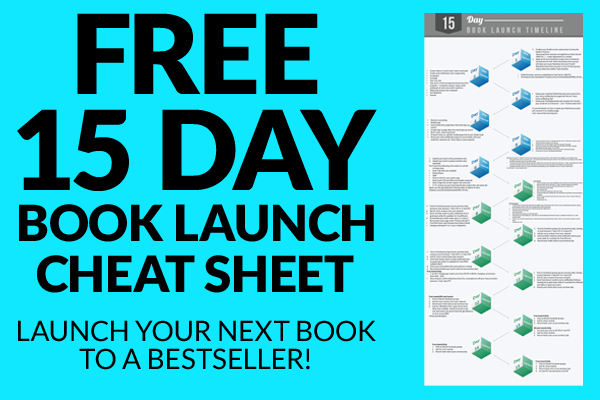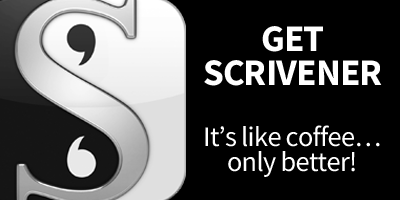If your friend jumped off a bridge, would you do it too?
I used to love hearing my mother ask me that question in response to some crazy stunt I’d pulled. But the reality is, that’s exactly how most of us make decisions.
#1 – If the right person says it, it must be true…
Book purchases work much the same way that all purchase decisions do—if the herd likes something, it must be good.
Without reviews, it’s difficult to get traction (aka sales) for your book.
We don’t need to tell you how important it is to get reviews, right? Think about it for a second. When you’re investigating a new purchase, you’ll generally do one of two things:
- Ask your friends and family for a recommendation.
- Do a quick search on Google, check a few products out, and then see what other customers have said who purchased the product you’re interested in.
The same goes for books. Which is why it’s so important to not only get reviews, but editorial reviews and/or a foreword for your book.
Sometimes, those things can be the difference between a few sales a month to hundreds of sales per month.
#2 – What Editorial Reviews Are
First things first. Let’s quickly explain what an editorial review is not. It’s not a review from a raving fan, your mum or your best friend. An editorial review is from a source that is impartial and independent.
More often than not, they’ll be from a newspaper or blog.
Editorial reviews work for both fiction and non-fiction books. The key difference is you’ll be approaching different sites.
#3 – It’s Spelled “Foreword,” not “forward”
A foreword is a short introduction to your book, ideally written by an influential author or authority in your niche or genre. It’s purpose is to lend credibility and authority to your book or story before anyone ever starts reading it.
#4 – You Can Increase Your Odds of Getting an Editorial Review
Before you start, you should have a little “kit” together in preparation for getting these reviews. Here’s what to include in that kit:
- A PDF version of your book with your book cover incorporated so it looks professional (this should be your completed and edited book)
- Print copies of your book if you want to increase the chances of getting good editorial reviews (with the ability to send these world-wide if needed)
- A press release about your book. This should be approx. 300-400 words long and read like an announcement about your book. Joel Friedlander has a great mini-tutorial on how to do this.
- Photos of you with your book! These need to be high-resolution, so make sure you’ve got a camera or smartphone that can take great photos.
#5 – You Should Target Your Search for an Editorial Reviewer
If Stephen King says your book scared him to death, a reader who likes horror is going to be more excited to read it. Similarly, if Tim Ferris says he used your book about “travel hacks” to save $10,000, flying around the globe last year, a reader interested in that subject is going to purchase it without much further investigation.
That’s the power of authority! The right person can make your book sales soar.
So you’ll want to identify the right sites or people that might provide you with an editorial review.
For fiction authors, think about your niche. Are there specific websites that are dedicated to your genre? What about any local newspapers—would they be interested in your upcoming book?
For non-fiction authors, review your subject matter, are there blogs on your topic that you could reach out to? Local newspapers are good as well as podcast interviewers.
Below is a list of some of the sites that you can contact, regardless of your niche or genre:
 Midwest Book Review, free for print books, $50 for ebooks
Midwest Book Review, free for print books, $50 for ebooks
 This extensive list of book reviewers is updated regularly, definitely check it out
This extensive list of book reviewers is updated regularly, definitely check it out
 http://bookblogs.ning.com/ – this site provides you with plenty of options regarding blogs that review books, a great resource
http://bookblogs.ning.com/ – this site provides you with plenty of options regarding blogs that review books, a great resource
 For print books, you should check out IBPA marketing programs
For print books, you should check out IBPA marketing programs
Try getting a foreword…
Now that you’ve figured out where you can get some editorial reviews, you might want to consider the option of a foreword as well. This works best in non-fiction books, but could work in a fiction book if you were securing one from a well-known author in your genre.
Regardless of what option you choose, you’ll need to make sure that your approach is right.
Before we share our email template with you, it’s important that you approach the right reviewer or person for a foreword. Make sure they’re relevant to your target audience as well as your specific genre. A book about werewolves shouldn’t have a foreword written by a romance novelist.
#6 – The “Best” Way to Get an Editorial Review
We’ve said it before—writing advice is opinion. And there are many ways to get an editorial review or foreword for your book. The best way to get one? Whatever works!
That being said, here’s our favorite method of securing an editorial review or foreword for our books.
Okay, here’s what your email should look like for the best possible chance at getting a foreword from a well-known influencer or author in your niche:
Hi … (if there’s a VA or ‘gatekeeper’, make sure you address them first!)
I have an opportunity for xxx (influencer’s name or reviewers name) that I’ve outlined below, thank you so much for your time and consideration and for passing this on.
OR…
Hi xxx
Include something personal here, compliment their book or program where possible.
I’m writing because my new book, (Your book’s awesome title here, italicized of course.) can add serious value to your fans, who are inspired and have a million ideas but need help on WHICH idea to choose and/or HOW to take their “side hustle” to their full-time job.
(Your awesome book title) isn’t for finding a new job, startups or those wanting to earn “easy money” online. It explains lessons from my own crazy journey from employee to freelancer to full-time author.
I’m working with a book coach and a few influencers online to ensure that this book reaches the #1 slot in its categories and maintains that as an Amazon bestseller.
Below is how I’d love for you to get involved. In return I’ll do ALL of the following for your next book/project/product launch. In addition, I would also love to be your affiliate, speak at your events, or do any editing working you may need, free of charge. I’m open to your ideas as well:
1. Review Blurb for my book description on Amazon (I’m happy to draft a few options for you to read and approve if you’d like. I’m told this is common practice and will save you time)
2. Twitter/Facebook shout out on launch day, currently scheduled for (insert date here)It would be a gigantic honor and mean the world to me personally to have your involvement in my book launch. I know you’re incredibly busy, so instead of the full manuscript, I’ve attached a few sample chapters that I think you’d enjoy. Please let me know if you’re interested by (Realistic date for them to reply).
Thank you so much for your time!
(Your name here)
Obviously, you can tailor this to your own voice, book’s contents and any other specifics. This is what I’ve used in the past to promote my Side Hustle Blueprint books.
If you’re looking to reach out to get an editorial review, your email could look something like the following:
Dear (Editorial Reviewer name)
My name is (Your Name) and I’m a self-published author. I have (The true number of books you’ve written—they’ll check) number of books published and love working with other small businesses.
My new book, (Awesome Book Title), is due to be released on (Release Date). I’m looking for a few key influencers to read and review my book and would appreciate it if you were able to help with this.
The book is available in PDF, ebook and print versions and I can send you one or all of these options.
I look forward to hearing from you soon.
(Your Name)
#7 – Keep it Short and Sweet
Make sure you’ve read and understood their requirements, then state your point and make your request.
And don’t forget to follow up! But don’t be annoying—don’t follow up more than 3 times in a month.
#8 – Line up Editorial Reviews EARLY!
Which brings us to the final point—make sure you approach potential editorial reviewers 40+ days prior to your launch.
Not everyone you approach will respond and not everyone who responds will say yes, so this is to give yourself enough time to find the ones that agree.
Receiving these reviews after your launch is okay, but if you want to get the most bang for your buck, getting these editorial reviews or forewords before launch is must. Especially a foreword, which will have to go into your book’s internals before you publish it.
#9 – Don’t Worry if You Can’t Find Someone
When you first start out, you’ll find that influencers are seriously busy people—everyone wants to hitch a wagon to their success. Because of that, you may not find someone who’ll agree to give you an editorial review on your first try or your first book.
Don’t let initial difficulty discourage you.
Go back and concentrate on getting any reviews you can for your book, building your fan base and platform, and increasing your own influence. Pretty soon, other authors will be asking you for editorial reviews. And when they do, remember how it felt when you were soliciting them—answer every email you get!



Awesome post Lise. My to do list is getting bigger every time I read one of your articles. Thanks for providing so much free advice, along with the resources that have obviously worked very well for your own books.
Great article, Lise! Really good to read about the details of getting editorial reviews. Thanks!